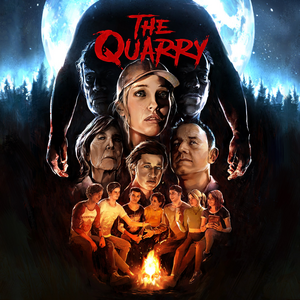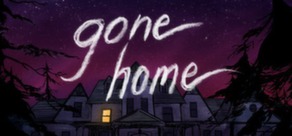 Did you ever want to take the movie Friday the 13th, put it in a blender with a choose your own adventure novel, and put the resulting mash into a not-quite walking sim video game? I mean, I hope you wanted to. Who even are you, if you didn’t?!
Did you ever want to take the movie Friday the 13th, put it in a blender with a choose your own adventure novel, and put the resulting mash into a not-quite walking sim video game? I mean, I hope you wanted to. Who even are you, if you didn’t?!
The Quarry documents the events of the night after the last night of summer camp at Hackett’s Quarry in upstate New York, in the summer of 2021[1]. All of the kids have returned home, and the counselors are cleaning and packing up to vacate the premises themselves (other than the two counselors who never showed up for the summer, after vanishing ominously in the prologue). Of course, nothing ever goes quite as planned when you’re high school on the cusp of college-aged summer camp counselors in a horror movie, does it?
The gameplay is a mixture of walking sim while looking for clues and things and the choose your own adventure interludes I mentioned, either interrupted occasionally by fairly forgiving quicktime events[2], timed CYOA decisions, wildly infrequent gunplay, and occasional exercises in hiding and trying to decide when to stop holding your breath. Oh, and also interrupted by chapter breaks when a creepy fortune teller attempts to influence your path. If this all sounds like mostly minimalist play in which the actual story is the real star, well, there’s a mode where you can have it just show you the movie with randomly determined outcomes, if that gives you an idea of what you’re in for.
All that said, I’m leaving out the piece of the game (aside from the actual story) that I found the most compelling. You can’t just go back and fix the decisions you regret. No take backs! I’m not sure why I’ve never envisioned such a possibility in interactive fiction before, but I haven’t, and it seems nobody else had either, since this is the first time I’m finding such a thing. It’s especially well suited to a horror movie, where people that you wanted to survive die tragically all the time, and there’s not a damned thing you can do about it.
I need to let some time pass, but I very much want to play this again, and that is not something you will catch me saying very often, anymore. Strongly recommended, unless you hate horror movies on the face of it or will feel really bad when the characters die and it’s your fault. But honestly it’s not very scary, even though it is occasionally shocking and definitely violent as all get out.
[1] Or 2022, I forget. Like it matters. This is not a game world that experienced COVID, y’all.
[2] Example: I think I managed to catch multiple of them even though I had set the controller down for a moment
 I’m in a weird position here, in that I’ve never played an episodic game before. The chapters are not terribly long, but they’re long enough that the full game seems like it will turn out to be incredibly long, plus also I’m so bad at reviewing partial games anyway. Not to say I expect to stop playing Life Is Strange! But things happen sometimes, and the part where I opted to take a break between chapters is, if not telling, at least cautionary.
I’m in a weird position here, in that I’ve never played an episodic game before. The chapters are not terribly long, but they’re long enough that the full game seems like it will turn out to be incredibly long, plus also I’m so bad at reviewing partial games anyway. Not to say I expect to stop playing Life Is Strange! But things happen sometimes, and the part where I opted to take a break between chapters is, if not telling, at least cautionary.